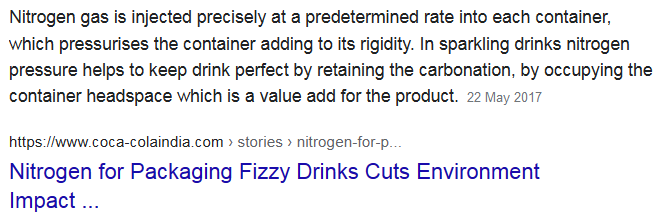I was joking to myself about using the waste gas from a coal fired power station to make fizzy drinks.
Knowing already that a coal fired power station produces too much waste gas.
Realising that the waste gas is (after bag and electroststic filter and sulfur dioxide scrubber) about 70% nitrogen and 30% CO2.
When I suddenly thought, why not.
Why not use a mixture of CO2 and N2 in fizzy drinks rather than pure CO2?
In fire extinguishers, too, a mixture of CO2 and N2 could substitute for a CO2 extinguisher.
And in spray cans which are now pressurised by N2, a mixture of N2 and CO2 would work.
A mixture of CO2 and N2 in a gas bottle would be much cheaper than pure CO2, and probably suffice for just about any purpose that pure CO2 or N2 is now used.
Then I remembered that fizzy drink manufacturers get their CO2 from an on-site furnace. So do they already use a mixture of CO2 and N2?
Checking BOC gases. They do sell bottled 30% CO2 in nitrogen.
But list it as “this is a specialist gas that is made on request”.
Let’s just check that fizzy drink usage is much smaller than coal-fired station output.
The entire use for fizzy drink gases worldwide would come to something like (give or take a factor of 3) – 5,000 litres per second.
That’s roughly 5 kg/s, 430 tonnes per day.
Compare with a power station. “a 1000 MWe coal plant uses 9000 tonnes of coal per day”
9000 tonnes of coal makes 70,000 tonnes of CO2 + nitrogen. Yep, heaps larger.
Any way, going back to my questions:
Do fizzy drinks already contain 30% CO2 and 70% N2?
Could they, without jeopardising the taste?
What about fire extinguishers?
What about pressurised spray cans?


